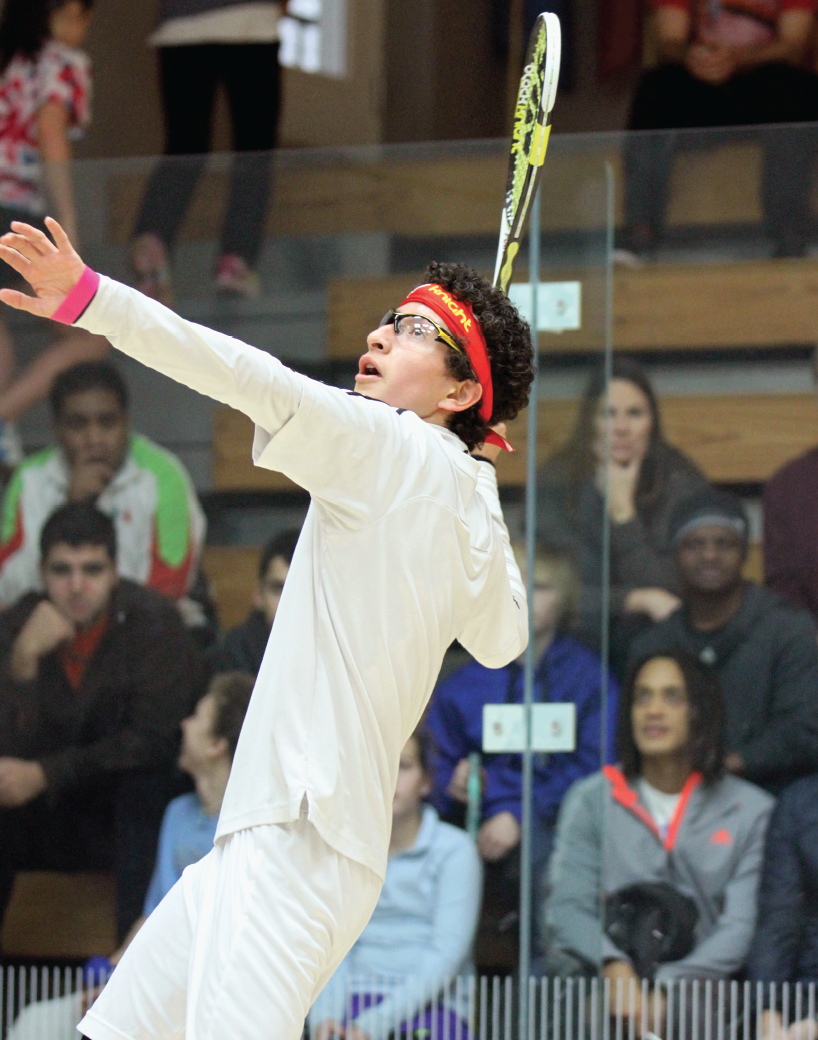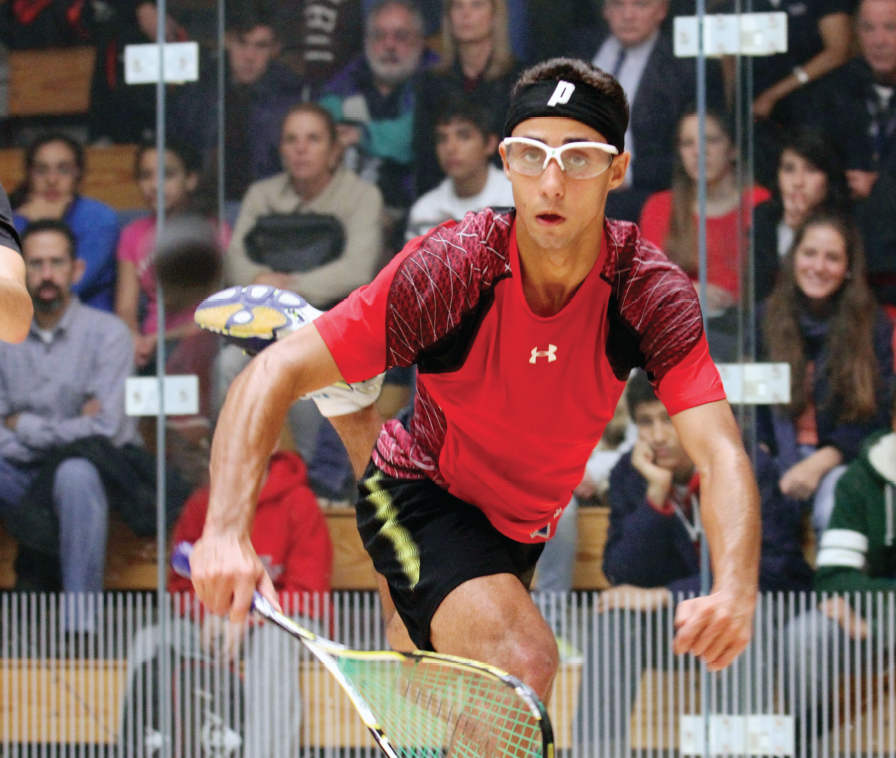
By Vidya Rajan
Cemented as the world’s largest junior tournament, the 2012 US Junior Open brought together over 800 participants from 24 different countries. Played at Harvard University for the third year running with additional matches played at Belmont Hill School, Northeastern University, and the Massachusetts Institute of Technology, the tournament saw a high caliber of match play across all 10 age divisions and was hailed by players and coaches alike as a tournament akin to the prestigious British Junior Open, played in Sheffield, England.
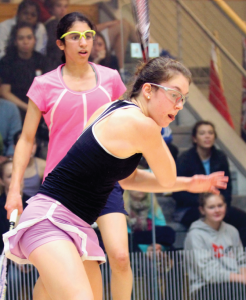
This year’s tournament saw a plethora of veterans and newcomers alike rising to take the championship. Boys’ Under-19 champion Karim El Hammamy, for example, celebrated his maiden victory and entry in the tournament, beating Osama Khalifa in four games in the final. Both boys are from Egypt but Khalifa is currently attending boarding school at Deerfield Academy in Deerfield, Massachusetts. El Hammamy plays out of Heliopolis Club in Cairo, home of players like Ramy Ashour and Raneem El Weleily. According to his coach, Heliopolis Club head coach Hatem Hassan, El Hammamy is ranked No. 1 in Egypt’s Under-17 national rankings and No. 3 in the Under-19 rankings.
After an exciting match filled with dives, nicks, and scrappy gets, El Hammamy described his experience in the final and in the tournament overall with quiet, but earnest, modesty. “[The US Junior Open] was a really hard tournament to win,” El Hammamy said. “Especially the last match, with Osama. We have played many times in Egypt and he always wins, so it was a really hard match. This is the first time I have beaten him.”
Hassan, his coach, expressed his enjoyment at bringing his players to the US Junior Open for the fourth year in a row. “It is so interesting to be a part of this tournament,” he said. “My players like to be here. I think next year we will bring more players to participate. The standard of this tournament is increasing rapidly every year, and this year I was surprised by the level of some players.””
According to Hassan, the US Junior Open is a particularly appealing tournament for Egyptian players because the Egyptian Squash Association does not cap the number of players that can play. For the British Junior Open, on the other hand, the Association allows only 40 players to play—five in each age division—so as to ensure a high level of competition and that Egypt presents its best face forward in the tournament. Given the high caliber of Egyptian squash, having more Egyptian participants in the US Junior Open can only help the tournament further boost its reputation and level of play.
Another final of surely remarkable quality—between two American players, but both of Egyptian descent—was the Girls’ Under-19 final between Sabrina Sobhy of Sea Cliff, New York, and Reeham Sedky of Seattle, Washington. Both just 15 years old during the final and ranked 1 and 2 respectively in the US Girls’ Under-19 rankings, the two have met in four US Junior Open finals, two US Junior Closed finals, and numerous other US tournaments since 2008, with Sedky more often coming out on top. This time, however, was a different story with Sobhy winning authoritatively in four games, floating beautiful drops to the front that caught Sedky flat-footed more than once.
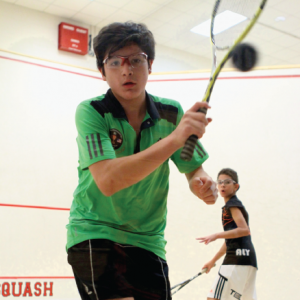
Sobhy cited her mental makeup as the key to her victory in the final. “I’ve played her a bunch of times,” Sobhy said. “I’ve played her every US Open and lost every time. I was just trying not to be nervous…I was not as stressed out and that was probably the reason why I won. It actually helped a lot that I wasn’t seeded first, which I usually was. There was no pressure on me.”
Coached during the match by big sister Amanda, former top junior player, current intercollegiate champion, Harvard No. 1, and WISPA No. 19, in addition to father Khaled and Hisham Ashour, Sobhy won a tight 13-11 first game and never looked back save for a momentary lapse in the third game, which Sedky won. “Once I figured out she hangs back, I tried to drop, hold and drop, as much as possible. That seemed to work,” Sobhy said.
Indeed it did, with the crowd roaring in appreciation as Sedky and Sobhy’s clashing styles of play—powerful, aggressive, and hard-hitting versus quick, creative, and crafty—gave spectators a feast of a final to watch.
The Girls’ Under-17 final between Egyptian Laila Omar and American Chloe Chemtob of Winter Park, Florida, was another exciting matchup. Omar, the 2011 British Junior Open Girls’ Under-15 finalist, is also enrolled in boarding school in the United States this year as a junior at Westminster School in Simsbury, Connecticut. There, she is coached by Peter Doucette and Peter Ulrich, men’s and women’s team coaches, and played the final in her Westminster uniform, proudly displaying her school pride.
“We were in the car going to the match yesterday and Mr. Doucette asked me if I was nervous. I told him, ‘Yeah, I’m very nervous, but I’m wearing the Westminster uniform, so I’m confident,’” Omar said. “Being in this uniform is something huge for me.”
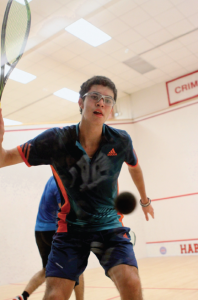
Omar had competed in the US Junior Open last year as well but lost in the quarterfinals, injured, to Sue Ann Yong of Malaysia, also in boarding school at the Taft School in Watertown, Connecticut. Yong finished sixth in this year’s tournament. “Sue Ann and I are very good friends and both used to play international tournaments, so we know each other very well. She will be my opponent now!” Omar exclaimed.
Transitioning to school in the US has certainly taken its toll, however. “In Egypt, I used to train for a long time,” Omar said. “But here since studying takes most of the time, I’m not practicing as I used to. I had injured my hamstring before this tournament, and this is my first tournament in so long. I just played, feeling nervous that I was out of shape, but it’s great that I won. I’m so happy.”
The Boys’ Under-17 final pitted Peruvian Diego Elias against Egyptian Karim Tarek, with Elias winning in four games. Elias, a finalist in last year’s US Junior Open in the Boys’ Under-17 draw and the Boys’ Under-15 champion the previous year, was one of the few Peruvian players participating in the tournament. Elias also went on to win the Boys’ Under-17 title at the British Junior Open in Sheffield, adding to an illustrious line of career wins just this year including championship titles at the Dutch Junior Open, Pioneer Junior Open, Canadian Junior Open, and a Peruvian national title inherited from his father Jose Manuel.
“I like this tournament very much, and I will be back next year,” Elias said. He plans to play professionally eventually, and will surely be a name to watch in the years to come.
In the Girls’ Under-15 final, Helen Teegan of Seattle, Washington, cruised to the title in straight games over Casey Wong of Ruxton, Maryland. The title is Teegan’s third US Junior Open title after winning the Girls’ Under-13 division in 2010 and the Girls’ Under-11s in 2008, and adds to her 2011 and 2012 US Junior Closed titles. A multi-sport athlete, Teegan has won state and regional level swimming championships as well. She played a strong and controlled game throughout the tournament.
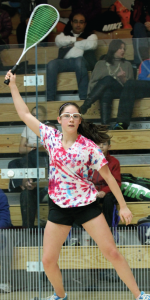
In fact, Teegan’s was the only American victory across the board aside from Sobhy’s in the Girls’ Under-19 draw. In the Boys’ Under-15s, David Yaccobucci of Greenwich, Connecticut, reached the final but fell in four tight games to Juan Jesus J. Camacho Mercado of Mexico. Mercado’s compatriot Leonel Cardenas, Jr., won the Boys’ Under-13 title against Egyptian Aly Abou El Einen, who was easily half his size but ran his heart out in a match that had the crowd on its feet at nearly every other point.
The Boys’ and Girls’ Under-11 draws were snapped up by Egyptians Karim Elbarbary and Farida Mohamed respectively. “I liked all the people I played with,” Mohamed said. “When I won they came and said congratulations, and we were friends after the match.”
With over 1800 matches played in total over the four venues as reported by US Squash, this year’s US Junior Open was truly a handful for tournament organizers. But despite its size, the tournament ran smoothly as attested to by Mike Way, head squash coach at Harvard as he expressed his pleasure at hosting the tournament at Harvard’s Murr center. “We coaches are obviously delighted to be in the Murr center hosting this event,” Way said. “I do think that it’s probably the best facility in America for such an event. I thought it went very smoothly, and US Squash did an awesome job.”
Way waxed poetic on the fact that this is surely the only tournament of its kind in America, in terms of bringing together so many cultures and styles of play. “The international players bring something to tournaments in America,” Way explained. “There’s a sort of a richness, a real sort of celebration of squash.”
In an age when squash is increasingly being seen as a vehicle to something more— university admissions, professional networking, an Olympic bid—it is refreshing to experience, as Way said, a celebration of the sport itself. The US Junior Open is a chance for players new and old to participate in and observe not only an extraordinary level of play, but the kind of energy and excitement that inspires players to take up this sport in the first place. It is a unique opportunity for players to realize their passion for squash, and amidst the trials of competition, play for the love of the game.


